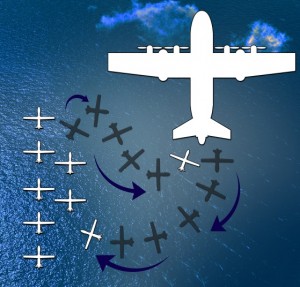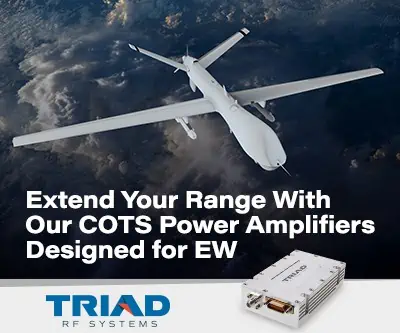 The Defense Advanced Research Projects Agency (DARPA) has invited input on how to enable existing large aircraft to carry, launch and recover multiple unmanned air systems for a variety of missions.
The Defense Advanced Research Projects Agency (DARPA) has invited input on how to enable existing large aircraft to carry, launch and recover multiple unmanned air systems for a variety of missions.
Military air operations typically rely on large, manned, robust aircraft, but such missions put these expensive assets—and their pilots—at risk. While small unmanned aircraft systems (UAS) can reduce or eliminate such risks, they lack the speed, range and endurance of larger aircraft. These complementary traits suggest potential benefits in a blended approach—one in which larger aircraft would carry, launch and recover multiple small UAS. Such an approach could greatly extend the range of UAS operations, enhance overall safety, and cost-effectively enable groundbreaking capabilities for intelligence, surveillance and reconnaissance (ISR) and other missions.
To explore and expedite the possible development of these potential benefits, DARPA has issued a Request for Information (RFI) seeking technical, security and business insights addressing the feasibility and potential value of an ability to launch and recover multiple small unmanned air systems from one or more types of existing large manned aircraft, such as C-130 transport planes.
“We want to find ways to make smaller aircraft more effective, and one promising idea is enabling existing large aircraft, with minimal modification, to become ‘aircraft carriers in the sky’,” said Dan Patt, DARPA program manager. “We envision innovative launch and recovery concepts for new UAS designs that would couple with recent advances in small payload design and collaborative technologies.”
The new RFI invites short (8 pages or less) responses that must address three primary areas:
- System-level technologies and concepts that would enable low-cost reusable small UAS platforms and airborne launch and recovery systems that would require minimal modification of existing large aircraft types. This area includes modeling and simulation as well as feasibility analysis, including substantiating preliminary data if available.
- Potentially high-payoff operational concepts and mission applications for distributed airborne capabilities and architectures, as well as relative capability and affordability compared to conventional approaches (e.g., monolithic aircraft and payloads or missile-based approaches). DARPA hopes to leverage significant investments in the area of precision relative navigation, which seeks to enable extremely coordinated flight activities among aircraft, as well as recent and ongoing development of small payloads (100 pounds or less).
- Proposed plans for achieving full-system flight demonstrations within four years, to assist in planning for a potential future DARPA program. DARPA is interested not only in what system functionality such plans could reasonably achieve within that timeframe, but also how to best demonstrate this functionality to potential users and transition partners. These notional plans should include rough order-of-magnitude (ROM) cost and schedule information, as well as interim risk reduction and demonstration events to evaluate program progress and validate system feasibility and interim capabilities.
Technology development beyond these three areas will be considered so long as it supports the RFI’s goals. DARPA is particularly interested in engaging nontraditional contributors to help develop leap-ahead technologies in the focus areas above, as well as other technologies that could potentially improve both the survivability and effectiveness of future manned and unmanned air systems.


















